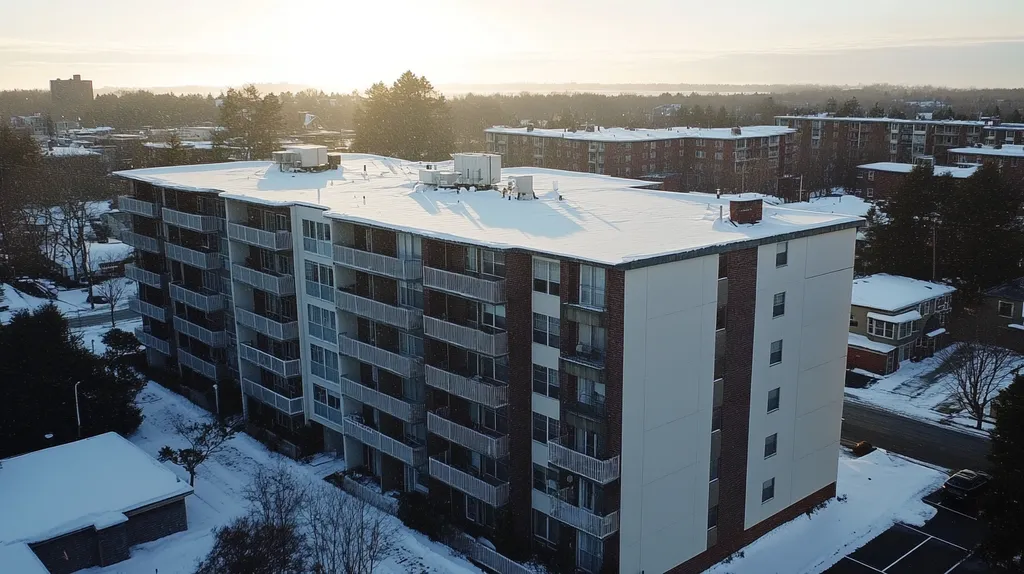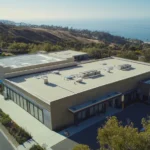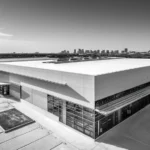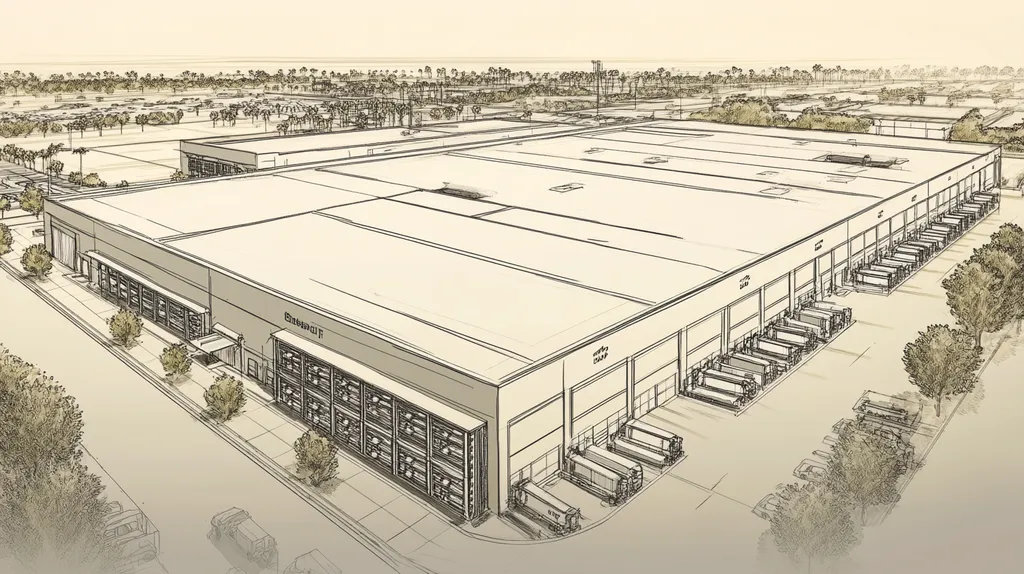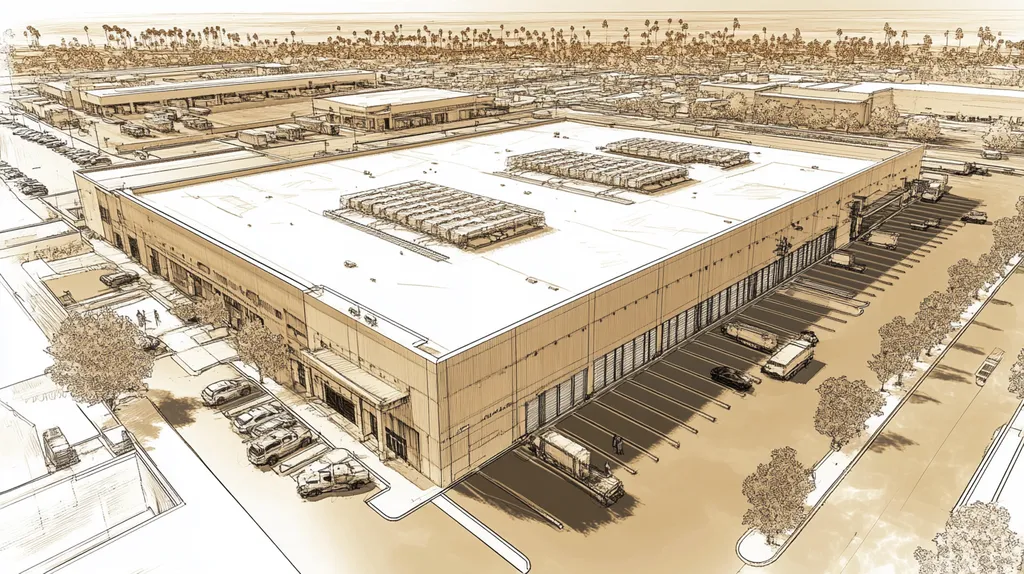With industrial energy costs surging 15% annually and environmental regulations tightening, facility managers face mounting pressure to maximize roof efficiency. Traditional industrial roofs waste up to 35% of cooling energy through heat absorption, driving up operational costs.
Roof gardens emerge as a game-changing solution, capable of slashing cooling expenses by 30% while extending roof lifespan by decades. These living systems transform unutilized roof space into powerful assets for energy conservation and stormwater management.
This comprehensive guide equips facility managers with actionable strategies for implementing roof gardens, from performance metrics to compliance requirements, ensuring maximum return on investment.
SECTION 1: PERFORMANCE FACTORS
With energy costs on the rise and environmental concerns taking center stage, industrial buildings need to step up their game to maximize sustainability and reduce operating expenses. Roof gardens offer an innovative solution that boosts energy efficiency, enhances thermal insulation, and effectively manages stormwater. For facility managers, mastering these performance factors is essential to optimize operations while supporting a greener planet.
Energy Demand Reduction
Roof gardens are game changers when it comes to cutting energy demand for heating and cooling. Traditional rooftops absorb heat, making buildings warmer and increasing air conditioning expenses. In contrast, a green roof functions like a natural blanket, reducing heat gain and keeping indoor temperatures more stable.
Studies indicate that implementing a roof garden can slash cooling costs by up to 30%. Such savings are particularly valuable during the hot summer months when air conditioning use spikes. Facility managers can redirect these savings to improve overall financial performance.
Additionally, roof gardens contribute to a building’s durability. They help decrease thermal stress on the roof membrane, lowering the chances of early roof failures that lead to costly replacements. As energy regulations tighten, opting for green roofing solutions can also help businesses stay compliant while boosting their reputation for sustainability.
Key Action Items
Thermal Insulation and Evaporation
A key advantage of roof gardens is their remarkable thermal insulation capabilities. Vegetation absorbs moisture, cooling the air through evaporation—a process known as evapotranspiration. This natural cooling effect mitigates the urban heat island effect often seen in densely built industrial areas.
Research has shown that the thermal resistance of green roofs can be up to four times more effective than that of standard roofs. This improved insulation means less reliance on HVAC systems, helping maintain a consistent indoor climate.
Furthermore, this cooling effect can enhance employee comfort, which in turn boosts workplace productivity. Facility managers should appreciate the broader benefits of roof gardens; creating a comfortable environment can lead to higher employee satisfaction and retention. Additionally, many building regulations now favor energy-efficient designs, allowing for bonus square footage or tax breaks for sustainable improvements.
Key Action Items
Stormwater Management
Proper stormwater management is crucial for industrial facilities, especially in urban zones dominated by hard surfaces. Roof gardens offer an eco-friendly way to capture and retain rainwater, significantly reducing runoff into drainage systems, which is essential given the growing regulatory focus on flood prevention.
These green roofs can absorb between 60% and 100% of rainfall, depending on plant types and soil depth. By minimizing runoff, facility managers not only protect the building and surrounding infrastructure but also help mitigate the risk of fines for stormwater violations.
Moreover, by slowing down rainwater entry into municipal systems, roof gardens assist in managing peak water flows during storms. This contributes to more stable groundwater levels, benefiting the local ecosystem. Facility managers can successfully transform roofing investments into valuable community assets.
Key Action Items
SECTION 2: FINANCIAL CONSIDERATIONS
Investing in roof gardens can have a significant positive impact on the financial performance of industrial properties. With rising energy costs, maximizing efficiency and reducing expenses are top priorities for facility managers. Roof gardens not only beautify buildings but also produce real savings through lower HVAC costs, longer roof lifespans, and potential financial incentives. This section will detail how roof gardens can be a smart financial strategy.
Cost Savings on HVAC Systems
Integrating roof gardens can lead to impressive savings on HVAC system costs. Research indicates that a roof garden can drastically reduce heat absorption, potentially lowering cooling needs by 30%. For instance, buildings equipped with these gardens can experience a drop of up to 30 degrees Fahrenheit in roof surface temperatures, making a substantial difference in energy bills.
This moderation translates directly into reduced energy consumption, allowing facility managers to allocate saved resources to other operational needs. Plus, with less strain on HVAC systems, there’s a significant extension in their lifespan, resulting in lower maintenance costs and fewer repairs over time.
In summary, the combination of decreased energy expenses and minimized maintenance creates a strong financial incentive for facility managers to incorporate roof gardens into their facilities.
Key Action Items
Extended Roof Lifespan and Maintenance
Roof gardens do more than enhance energy efficiency—they also prolong the life of roofing systems. Traditional roofs bear the brunt of UV radiation, harsh weather, and temperature swings, leading to premature wear. Roof gardens act as a buffer, protecting the underlying materials from these damaging factors.
Thanks to this protective layer, roofs integrated with gardens can last 20 to 50 years longer than standard roofs, leading to significant savings on replacements. The reduced frequency of necessary repairs allows managers to better allocate their budgets, directing funds toward other vital improvements.
Overall, investing in roof gardens not only ensures a more durable roof but also helps in optimizing operational budgets over the long run.
Key Action Items
Potential Tax Incentives and Grants
Beyond day-to-day savings, implementing roof gardens can open the door to various tax incentives and grants. Many municipalities offer financial programs aimed at promoting sustainable practices, including tax deductions or rebates related to green roofing projects.
Facility managers should explore available subsidies, which can cover a portion of installation costs, easing the initial financial burden. Additionally, properties with roof gardens may qualify for certifications that lead to more financial benefits.
Investing in a roof garden not only enhances profitability but also aligns with broader sustainability initiatives, appealing to eco-conscious consumers and stakeholders alike. It’s crucial for managers to research the offerings in their area and integrate these opportunities into their financial planning for roof gardens.
Key Action Items
SECTION 3: COMPLIANCE REQUIREMENTS
Facility managers face a critical challenge in understanding compliance requirements when exploring roof gardens for industrial buildings. Building codes ensure safety and support the structural integrity necessary for these installations. Additionally, environmental standards play a key role in achieving sustainability goals. Non-compliance not only leads to fines but can also delay projects significantly, making it imperative to thoroughly grasp local regulations.
Building Codes and Regulations
Building codes lay the foundation for safely installing roof gardens, addressing essential elements like structural support and fire safety. For instance, flat roofs must be assessed to ensure they can bear the extra weight of the soil and plants without risking stability.
Life safety codes may also require features such as accessible pathways and fire lanes. It is crucial for facility managers to adhere to these regulations, ensuring that roof gardens deliver both visual appeal and compliance with safety standards. Staying updated on revisions to building codes is essential to remain compliant.
Consulting a structural engineer can provide valuable insights on load calculations, helping to optimize design and mitigate compliance risks. Additionally, maintaining detailed documentation of compliance efforts during construction is vital for future inspections and can enhance the property’s value over time.
Key Action Items
Environmental Standards and Certifications
Environmental standards significantly influence the planning and implementation of roof gardens. Certification programs like LEED (Leadership in Energy and Environmental Design) focus on sustainability, helping facilities cut utility costs while promoting eco-friendly practices.
Integrating roof gardens can support the achievement of these certifications, as they enhance energy efficiency through natural insulation. However, to align with these standards, facility managers need to follow specific guidelines, such as incorporating native plant species for biodiversity.
A robust stormwater management plan is essential to comply with regulations on water management. This involves ensuring that the roof’s paving and drainage systems are designed to align with the green roof ecosystem. To streamline the certification process, seeking expert guidance can save time and enhance compliance effectiveness.
Key Action Items
Local Zoning and Land Use Policies
Local zoning and land use policies can greatly influence the viability of roof gardens. Many municipalities enforce specific guidelines around green roofs, responding to environmental considerations. Being well-versed in these policies is crucial for facility managers seeking to implement roof gardens.
Some local regulations may restrict rooftop modifications, requiring permits and reviews before proceeding. To avoid unforeseen challenges, initiating the planning process early and engaging local planning authorities for insights on zoning laws is advisable.
Additionally, local incentives may make investing in roof gardens more attractive. Many municipalities offer tax credits for green roof installations, substantially reducing upfront expenses. Understanding these benefits can justify the investment and support regulatory compliance.
Key Action Items
SECTION 4: RISK MANAGEMENT
As urban areas expand, industrial roofing faces increasing challenges that demand attention. Issues such as extreme heat, stormwater management, and the threat of roof damage are ever-present concerns. Roof gardens emerge as a crucial solution, effectively addressing these risks while enhancing roof efficiency. For facility managers, recognizing the benefits and best practices for green roofs is vital to maximizing their positive impact.
Mitigating Urban Heat Island Effects
Urban heat islands pose a significant challenge, causing industrial regions to be warmer than their rural counterparts. This increase in temperature can inflate energy usage, exacerbate air pollution, and heighten health risks. Roof gardens provide a natural remedy, delivering cooling effects through the process of evapotranspiration.
By absorbing sunlight and carbon dioxide, plants on green roofs help keep temperatures cooler. Studies show these gardens can lower roof surface temperatures by up to 40%. Implementing such solutions not only combats the heat island effect but also promotes energy efficiency and benefits the local environment.
Investing in green roofs fosters lower energy costs, which is increasingly important as energy codes tighten. This proactive choice moves facilities closer to sustainability goals while potentially facilitating the adoption of renewable energy solutions.
Key Action Items
Reducing Stormwater Runoff Risks
Stormwater management is a growing challenge in urban settings, contributing to flooding and pollution. Industrial rooftops, often made of impermeable materials, worsen runoff issues. Roof gardens can substantially alleviate these concerns by capturing and handling stormwater effectively.
These gardens can retain around 70% of rainfall during the summer months, significantly lowering the amount of water that enters drainage systems. This not only protects the facility but also reduces strain on local wastewater management.
Furthermore, utilizing green roofs can help facility managers meet local stormwater regulations. Many jurisdictions recognize roof gardens as best management practices, thus lowering the risk of fines and promoting green infrastructure.
Key Action Items
Protecting Against Roof Damage
Weather-related wear and tear is an often-overlooked concern for industrial roofs. Elements like intense UV radiation and severe weather can compromise structural integrity over time. Roof gardens serve as a protective barrier against these damaging forces.
The layer of plants absorbs sunlight, while the soil beneath mitigates UV exposure, significantly extending the lifespan of roofing materials. This approach can diminish upkeep needs and replacement costs.
Moreover, a well-maintained roof garden adds stability, especially during high winds. This added support can minimize the risk of roof failures, safeguarding operations and preventing costly repairs.
Key Action Items
SECTION 5: OPERATIONAL PROCEDURES
Installing and maintaining a roof garden is crucial for unlocking its full potential in enhancing industrial roof efficiency. With the capability to lower roof temperatures and diminish energy costs by up to 30%, addressing operational procedures is critical. Facility managers must prioritize proper installation, regular maintenance, efficient water management, and continuous monitoring to secure the long-term success of their green roofs. This section provides a clear guide to these essential procedures.
Installation and Maintenance Guidelines
A successful roof garden installation starts with a detailed examination of the existing roof structure. It’s vital to confirm that the roof can support the weight of the soil and plants. Additionally, a trustworthy waterproof membrane is essential to ward off leaks and damage.
Ongoing maintenance plays a crucial role in the health of the garden. This includes regular inspections for plant health, signs of soil erosion, and any drainage problems. Keeping pathways clear and removing debris also enhance both the aesthetics and functionality of the roof garden.
Engaging with professional landscapers who specialize in green roofs brings added benefits, particularly in selecting plants and managing pests effectively. Creating a seasonal maintenance schedule is key to fostering robust plant growth and conserving water, while thorough documentation of maintenance efforts helps track the garden’s progress over time.
Key Action Items
Water Management and Irrigation Systems
Smart water management is fundamental to the success of any roof garden. Both under-watering and over-watering can harm plants and jeopardize the roof’s integrity. Having an intelligent irrigation system tailored to the garden’s specific needs can lead to considerable water savings.
Drip irrigation is often the most efficient choice, delivering water straight to plant roots and minimizing waste. Incorporating rainwater harvesting solutions also helps capture water for later use, promoting sustainability.
Regularly checking soil moisture levels allows for accurate assessment of irrigation needs. Using soil sensors can automate this process, ensuring plants receive just the right amount of moisture while avoiding overwatering.
Choosing drought-resistant plants is another effective strategy, as they require less water and can thrive in diverse conditions, thereby enhancing the garden’s resilience.
Key Action Items
Monitoring and Performance Tracking
Monitoring and tracking performance metrics are essential for evaluating the efficacy of a roof garden. Consistent assessments help identify issues early, minimizing costly repairs in the long run. Installing temperature and humidity sensors can yield valuable insights regarding the microclimate above the building.
Additionally, tracking energy usage trends before and after installation can reveal the roof garden’s impact on overall efficiency. Such data informs ongoing adjustments and improvements to operations.
Facility managers may find it beneficial to utilize management software to centralize maintenance logs, monitoring data, and performance indicators, simplifying decision-making processes.
Conducting annual performance reviews with stakeholders is vital to confirm the garden’s achievements. These reviews should focus on environmental benefits, energy savings, and the overall visual appeal to sustain commitment to the roof garden project.
Key Action Items
SECTION 5: OPERATIONAL PROCEDURES
Installing and maintaining a roof garden is not just a design choice; it is crucial for maximizing industrial roof efficiency. With green roofs capable of lowering roof temperatures and cutting energy costs by up to 30%, the stakes are high. Facility managers must focus on essential operational procedures to ensure long-term performance. Proper installation, ongoing maintenance, effective water management, and robust monitoring systems are vital. This section outlines these procedures to help facility managers optimize their roof gardens.
Installation and Maintenance Guidelines
Effective installation of a roof garden begins with a thorough assessment of the existing roof structure. It’s key to ensure that the roof can safely support the additional weight of soil and plants. Each installation should also include a durable waterproof membrane to prevent leaks and damage.
Regular maintenance is equally important for health and longevity of the garden. This includes periodic inspections for dead plants, soil erosion, and drainage issues. Keeping pathways clear and removing debris enhances the garden’s aesthetics and functionality.
Additionally, collaborating with professional landscapers who specialize in green roofs can enhance efficiency. Their expertise in plant selection and pest management will help maintain a vibrant and healthy garden.
Developing a maintenance schedule that adjusts to seasonal changes is critical for supporting plant growth while minimizing water use. Facility managers should document maintenance activities to track the garden’s health over time.
Key Action Items
Water Management and Irrigation Systems
Effective water management is foundational for any successful roof garden. Both under-watering and over-watering can harm plants and compromise roof integrity. Implementing an efficient irrigation system tailored to the specific needs of the garden can lead to significant water savings.
Drip irrigation systems are often the most efficient, delivering water directly to plant roots, which minimizes waste. Consideration of rainwater harvesting systems can also maximize resource use by collecting and storing rainwater for irrigation.
Regular monitoring of soil moisture levels is vital to accurately assess irrigation needs. Utilizing soil sensors can help automate this process, ensuring that plants receive optimal moisture without the risk of overwatering.
Furthermore, selecting drought-resistant plants can significantly reduce water requirements while thriving in diverse conditions. This not only conserves water but also enhances the overall resilience of the green roof.
Key Action Items
Monitoring and Performance Tracking
Monitoring and performance tracking are essential for evaluating the efficiency of a roof garden. Regular assessments help identify issues early, reducing costs associated with repairs down the line. Installing temperature and humidity sensors provides valuable data about the microclimate above the building.
Additionally, tracking energy usage trends before and after installation offers insights into the roof garden’s impact on overall efficiency. This data informs ongoing adjustments and improvements to operations.
Facility managers can take advantage of management software to centralize maintenance logs, performance indicators, and monitoring data, making decision-making processes simpler and more effective.
Conducting annual performance reviews with stakeholders is vital to validating the garden’s benefits. These reviews should assess environmental impact, energy savings, and overall visual appeal, ensuring a sustained commitment to roof garden initiatives.
Key Action Items
Looking Ahead
With industrial energy costs projected to rise 25% by 2025 and stricter environmental regulations on the horizon, roof gardens represent a critical investment in operational efficiency and regulatory compliance.
The data is clear: properly implemented roof gardens can slash cooling costs by 30%, extend roof lifespan by decades, and capture up to 100% of stormwater runoff.
For facility managers, the path forward requires careful attention to structural requirements, maintenance protocols, and performance tracking to maximize these benefits.
As urban heat islands intensify and energy prices climb, roof gardens offer a proven solution that transforms unused space into a powerful asset for both environmental and financial sustainability.
The time to act is now – waiting only increases exposure to rising costs and regulatory risks while delaying the substantial returns that green roofs deliver.
FREQUENTLY ASKED QUESTIONS
Q. How can a commercial roof garden reduce energy demand?
A. Roof gardens act like natural insulators, lowering indoor temperatures by reducing heat absorption. This helps reduce cooling costs, especially in summer. Studies show that these installations can cut energy demand by up to 30%, allowing facility managers to save money on energy bills.
Q. What financial benefits can an industrial roof garden provide?
A. Installing roof gardens can lead to significant savings by lowering HVAC costs due to reduced heat absorption. Additionally, longer roof lifespans decrease maintenance expenses and may qualify buildings for tax credits, enhancing overall financial performance.
Q. What compliance requirements should I consider for green roofs?
A. Compliance requires understanding local building codes, safety regulations, and environmental standards. It’s essential to ensure structural integrity and adhere to safety protocols while integrating a roof garden. Regular consultations with a structural engineer can help meet these requirements efficiently.
Q. How do roof gardens mitigate urban heat island effects?
A. Roof gardens help cool urban areas through evapotranspiration, which lowers temperatures significantly. By absorbing sunlight, plants can reduce roof surface temperatures by up to 40%, combating the urban heat island effect while enhancing building energy efficiency.
Q. What are key operational procedures for maintaining roof gardens?
A. Key procedures include regular inspections of plant health, drainage systems, and irrigation. Establishing a seasonal maintenance schedule and documenting all maintenance activities are crucial for ensuring the garden remains vibrant and healthy while maximizing performance.
Q. How can I manage water efficiently in my roof garden?
A. Efficient management involves installing drip irrigation systems to deliver water directly to roots and using rainwater harvesting to capture and store water. Monitoring soil moisture levels regularly ensures plants receive optimal moisture without the risks associated with overwatering.
Q. What additional benefits do roof gardens provide beyond efficiency?
A. Roof gardens enhance aesthetic appeal, improve air quality, and promote biodiversity by providing habitat for various species. They can also boost employee morale and satisfaction by creating a pleasant and calming environment, which indirectly contributes to productivity.



